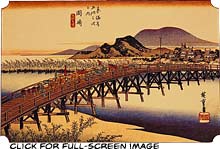You might think of rhythm as a purely acoustical principle found primarily in the world of music. But rhythm can be perceived in recurring sensory patterns of all kinds. When you tap your foot "in time" with music, you are responding kinesthetically by producing a regular rhythmic pattern. Choreographers create kinesthetic and visual rhythms through the medium of a dancer's movement. Visual rhythms are abundant in nature: ripples in sand are created from the action of lapping waves; repeated patterns of tree rings record cycles of growth; the four seasons have a rhythm, though the changes are nearly imperceptible from day to day. Designers and artists use rhythmic cues to organize time and space. Architects introduce rhythm into their buildings through the orchestration of light and dark patterns. Think of the rhythmic procession of a series of connected arches, for example. Contemporary lighting designers and special effects artists may use strobes or pyrotechnics to punctuate a narrative or musical score. In his work Okazaki, Ando Hiroshige's bridge supports create a rhythm that leads your eyes through the landscape. (http://www.sanford-artedventures.com/study/g_rhythm.html)
|












